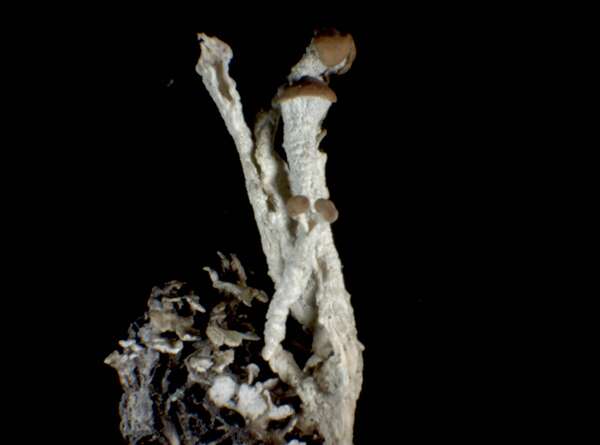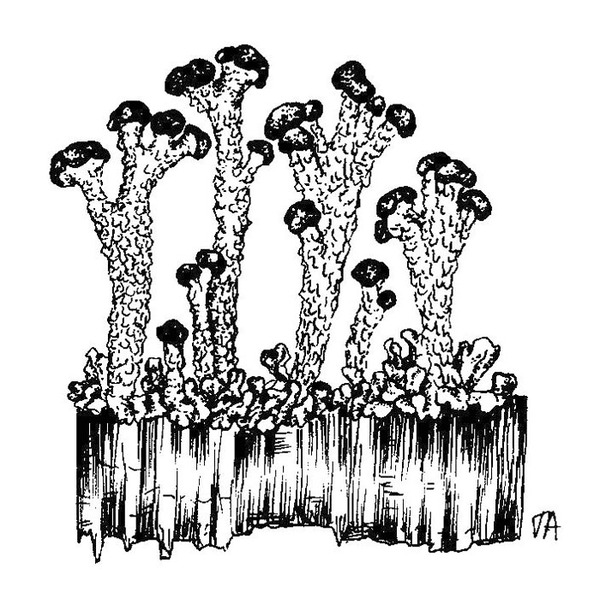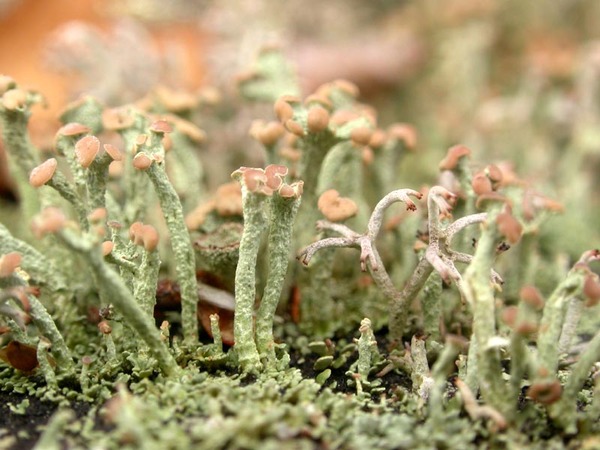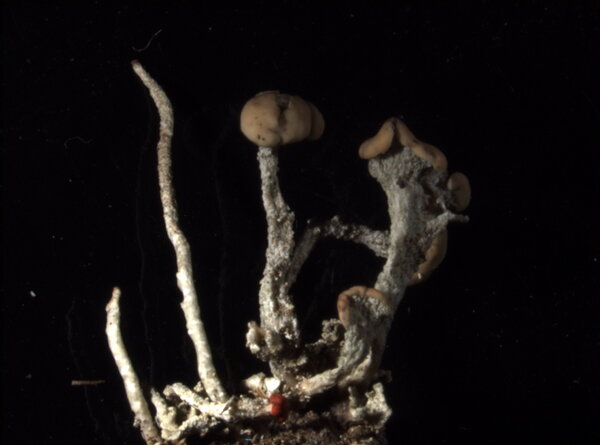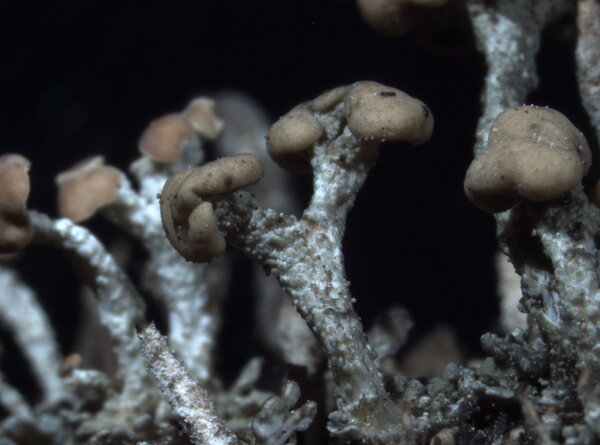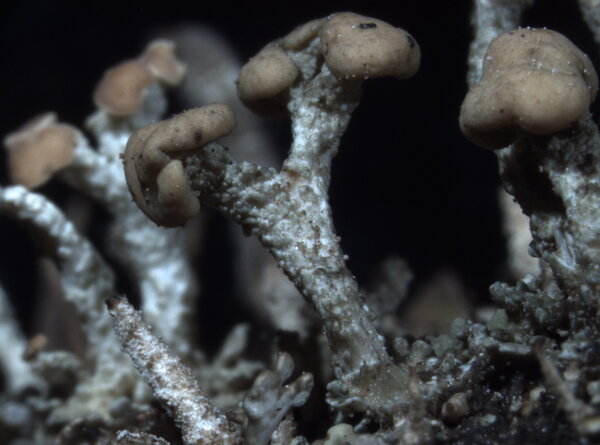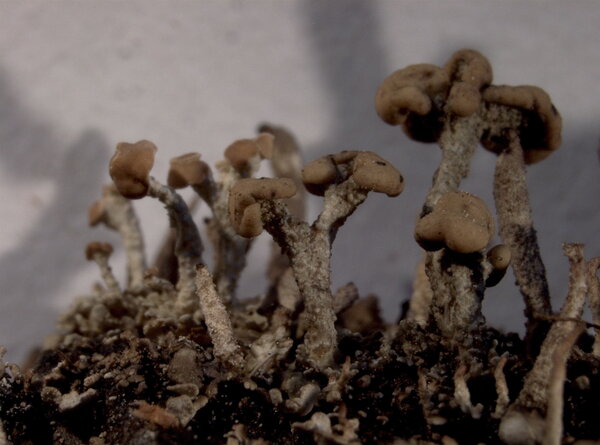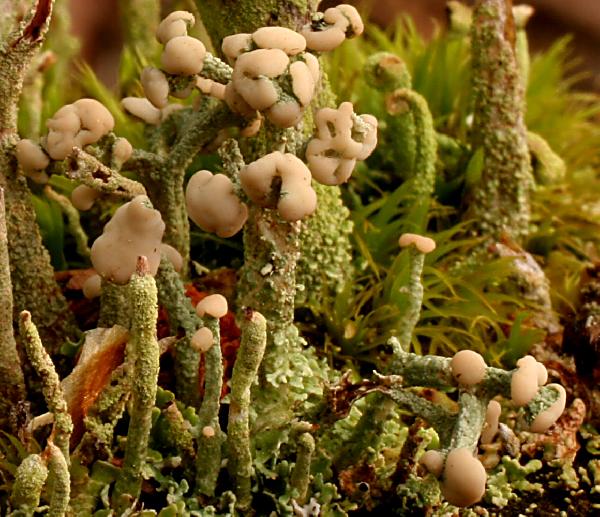Cladonia botrytes (K.G. Hagen) Willd.
Fl. Berol. Prodr.: 365, 1787. Basionym: Lichen botrytes K.G. Hagen - Tent. Hist. Lich.: 121, tab. 2, fig. 9, 1792.
Synonyms:
Distribution: N - Frl, Ven, TAA (Nascimbene & al. 2007b, 2022, Nascimbene 2008b, Watson 2014, Nimis & al. 2015). C - Sar.
Description: Primary thallus squamulose, the squamules usually persistent but inconspicuous, small, up to 1.5(-2) mm long, widening and crenate to laciniate at apex, ascending, yellowish green above, whitish below, esorediate. Podetia yellowish-green to yellowish grey, the bases often slightly melanotic, subcylindrical, simple or sparingly dichotomously branched in upper parts, widening toward the tip below the apothecia, 5-30 mm tall, 0.3-1.5 mm thick, simple or sparingly branched toward apices, cupless, corticate to the base, becoming verruculose-areolate, sometimes longitudinally fissured, often terminated with one or more confluent apothecia, without squamules or rarely with a few small squamules at the base. Apothecia frequent, terminal, pale yellowish brown or pale ochraceous brown, often grouped in small clusters, convex, the clusters up to 4 mm broad. Asci 8-spored, clavate, thickened at apex, with a K/I+ blue tholus and a K/I+ strongly blue outer gelatinous sheath, Cladonia-type. Ascospores 1-celled, hyaline, ellipsoid. Pycnidia semi-immersed on the upper side of the primary squamules or on the sides of the podetia, shortly cylindrical to turbinate, constricted at base, pale brown, with a colourless jelly. Conidia hyaline, curved. Photobiont chlorococcoid. Spot tests: K-, C-, KC+ yellowish, or KC-, P-, UV-. Chemistry: usnic, barbatic, and 4-O-demethylbarbatic acids.Note: a circumpolar, boreal-montane lichen found on decaying wood, mostly on horizontal faces of stumps and fallen trunks, especially of conifers, more rarely on decaying bark, with optimum near treeline. The record from South Tyrol of Cladonia carneola by Nascimbene (2008b) refers to this species (Nascimbene, in litt.). On the earlier, erroneous record from Lombardy, taken up by Burgaz & al. (2020) see Ravera & al. (2019b).
Growth form: Fruticose
Substrata: lignum
Photobiont: green algae other than Trentepohlia
Reproductive strategy: mainly sexual
Commonnes-rarity: (info)
Alpine belt: absent
Subalpine belt: very rare
Oromediterranean belt: extremely rare
Montane belt: extremely rare
Submediterranean belt: absent
Padanian area: absent
Humid submediterranean belt: absent
Humid mediterranean belt: absent
Dry mediterranean belt: absent

Predictive model
Herbarium samples
Growth form: Fruticose
Substrata: lignum
Photobiont: green algae other than Trentepohlia
Reproductive strategy: mainly sexual
Commonnes-rarity: (info)
Alpine belt: absent
Subalpine belt: very rare
Oromediterranean belt: extremely rare
Montane belt: extremely rare
Submediterranean belt: absent
Padanian area: absent
Humid submediterranean belt: absent
Humid mediterranean belt: absent
Dry mediterranean belt: absent

Predictive model
| Herbarium samples |
 INDEX FUNGORUM
INDEX FUNGORUM
 GBIF
GBIF
 DOLICHENS
DOLICHENS


